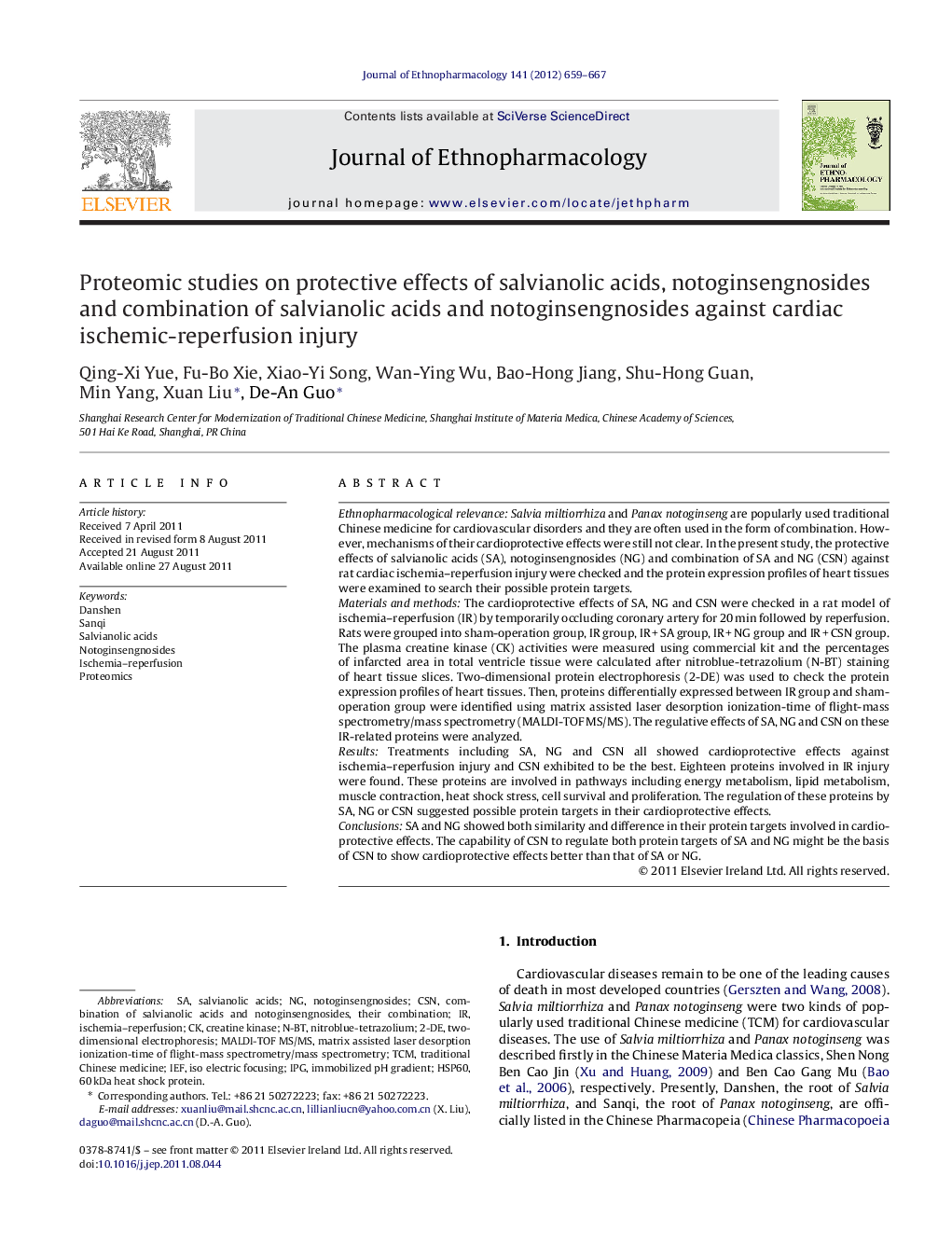| کد مقاله | کد نشریه | سال انتشار | مقاله انگلیسی | نسخه تمام متن |
|---|---|---|---|---|
| 2545603 | 1123969 | 2012 | 9 صفحه PDF | دانلود رایگان |

Ethnopharmacological relevanceSalvia miltiorrhiza and Panax notoginseng are popularly used traditional Chinese medicine for cardiovascular disorders and they are often used in the form of combination. However, mechanisms of their cardioprotective effects were still not clear. In the present study, the protective effects of salvianolic acids (SA), notoginsengnosides (NG) and combination of SA and NG (CSN) against rat cardiac ischemia–reperfusion injury were checked and the protein expression profiles of heart tissues were examined to search their possible protein targets.Materials and methodsThe cardioprotective effects of SA, NG and CSN were checked in a rat model of ischemia–reperfusion (IR) by temporarily occluding coronary artery for 20 min followed by reperfusion. Rats were grouped into sham-operation group, IR group, IR + SA group, IR + NG group and IR + CSN group. The plasma creatine kinase (CK) activities were measured using commercial kit and the percentages of infarcted area in total ventricle tissue were calculated after nitroblue-tetrazolium (N-BT) staining of heart tissue slices. Two-dimensional protein electrophoresis (2-DE) was used to check the protein expression profiles of heart tissues. Then, proteins differentially expressed between IR group and sham-operation group were identified using matrix assisted laser desorption ionization-time of flight-mass spectrometry/mass spectrometry (MALDI-TOF MS/MS). The regulative effects of SA, NG and CSN on these IR-related proteins were analyzed.ResultsTreatments including SA, NG and CSN all showed cardioprotective effects against ischemia–reperfusion injury and CSN exhibited to be the best. Eighteen proteins involved in IR injury were found. These proteins are involved in pathways including energy metabolism, lipid metabolism, muscle contraction, heat shock stress, cell survival and proliferation. The regulation of these proteins by SA, NG or CSN suggested possible protein targets in their cardioprotective effects.ConclusionsSA and NG showed both similarity and difference in their protein targets involved in cardioprotective effects. The capability of CSN to regulate both protein targets of SA and NG might be the basis of CSN to show cardioprotective effects better than that of SA or NG.
Salvianolic acids (SA) and notoginsengnosides (NG) showed difference in regulating ischemia–reperfusion injury-related proteins. The capability of CSN to regulate both protein targets of SA and NG might be its basis to exhibit effect better than SA or NG.Figure optionsDownload high-quality image (209 K)Download as PowerPoint slide
Journal: Journal of Ethnopharmacology - Volume 141, Issue 2, 1 June 2012, Pages 659–667